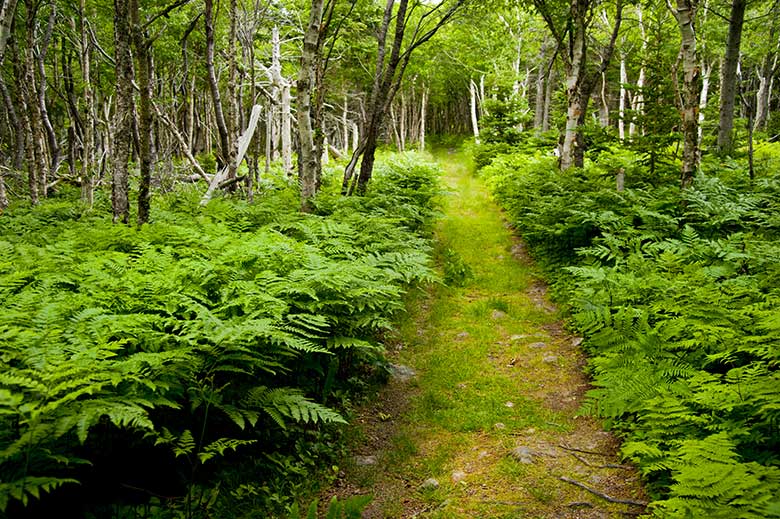Naturalize
Use Native Species
Many native species are suited to growing in a wide range of ecological conditions and they are usually best suited to the Nova Scotia climate. Because of this, once they are established they usually require less care and are a key element in creating a low maintenance and sustainable landscape. The species listed below are considered to be the types of species that would most usually be found in the Parks of West Bedford area, however, use of other native species may also be appropriate. Final planting decisions should be made based on specific site conditions, species availability, and advice from landscape specialists.

Native Trees best suited for certain site conditions:
- Dry/Poor Sites: Black Spruce, Balsam Fir, White Pine, Red Pine, White Birch, Grey Birch, Red Oak, Trembling Aspen, and Largetooth Aspen.
- Moist/Poor Sites: Black Spruce, Red Maple, Eastern Larch, and Balsam Fir.
- Average Sites: Red Spruce, White Spruce, Eastern Hemlock, White Pine, White Birch, Yellow Birch, Red Oak, Red Maple, and Sugar Maple.
- Moist/Rich Sites: Red Spruce, White Spruce, Eastern Hemlock, Yellow Birch, Red Maple, Sugar Maple, White Ash, and Ironwood.
- Native Shrubs: Wild Raisin, Serviceberry, False Holly, Canada Holly, Velvet-Leaf Blueberry, Lowbush Blueberry, Lambkill, Bush Honey Suckle, Huckleberry, Witch Hazel, Speckled Alder, Labrador Tea, Rhodora, Mountain Ash, Teaberry, Spirea, Striped Maple, Mountain Maple, and Beaked Hazelnut.
Lawn Mowing
The frequency, height, pattern and condition of a lawn mower can impact the quality and sustainability of a lawn landscape. The following items provide a recommendation for maintaining your lawn through proper lawn mowing practices:
- Always use a sharp blade—A dull blade will damage the remaining grass blades, potentially stunting future growth.
- Always mow when the grass is dry
- Mow at regular intervals (every 5-7 days).
- Cut grasses to a height of 6-8 cm. Higher cut grass will shade out weeds and encourages deep root growth.
- Never mow more than 1/3 of the grass blade—This puts additional stress on the grass, potentially stunting growth.
- Use a mulching lawn mower and leave grass clippings on yard. The cut grass will contribute nitrogen to the soil and reduce fertilizer use on the yard.
- Avoid mowing when turf is under heat and drought stress.
- Alter the pattern with each mowing event to reduce wear on the grass surface.
- Wear appropriate safety gear, which includes long pants and shirt and eye/ear protection.
- Use a low emission lawn mower. According to Canada’s Clean Air Foundation, a standard gas mower will emit the same amount of air pollutants in one hour as driving a new car for over 550 kilometers.
